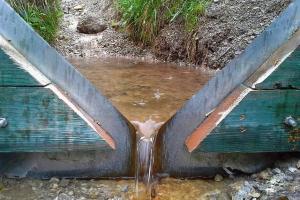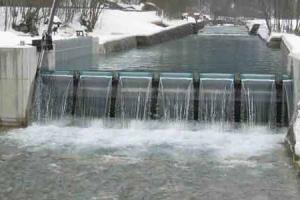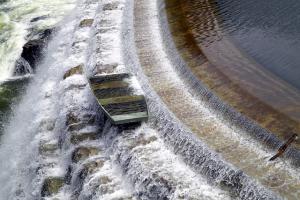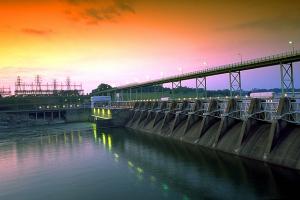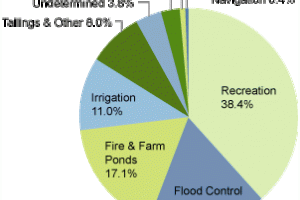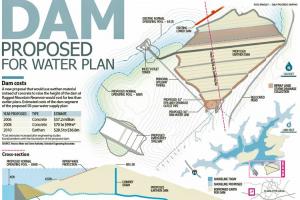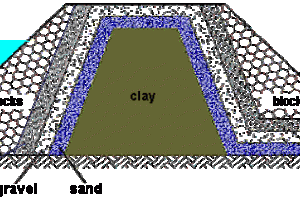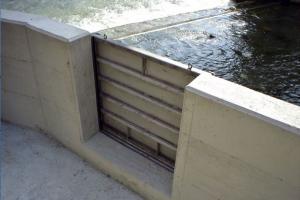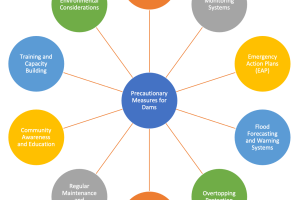Tunnels in Dams - Advantages and Application
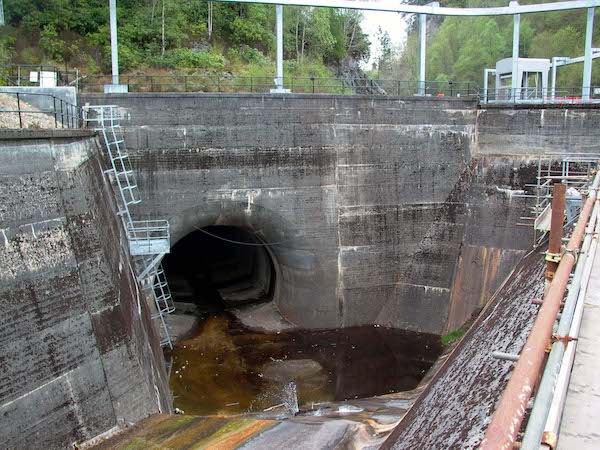
The type of intake structure depends on its location and function and on the various appurtenances, such as fish-screens, trashracks, stoplog arrangements, or operating platforms that must be furnished.
A means for dissipating the energy of flow before returning the discharge to the river should normally be provided. This can be accomplished by a flip bucket, a stilling basin, a baffled apron drop, a stilling well, or a similar dissipation device. Gate chambers, control platforms, or enclosures may be required to provide operating space and protective housing for the control devices. An outlet works may also require an outlet channel to return releases to the river and an entrance channel to lead diversion flows or low-reservoir flows to the intake structure.
Because of inherent advantages, a tunnel outlet works is preferred where abutment and foundation conditions permit its use and it is more economical than the other types of outlet works.
A tunnel is not in direct contact with the dam embankment and, therefore, provides a much safer and more durable layout than can be achieved with a cut-and-cover conduit. Little foundation settlement, differential movement, and structural displacement is experienced with a tunnel that has been bored through competent abutment material, and seepage along the outer surfaces of the tunnel lining or leakage into the material surrounding the tunnel is less serious.
Furthermore, it is less likely that failure of some portion of a tunnel would cause failure of the dam than the failure of a cut-and cover conduit that passes under or through the dam. Ordinarily, pressure tunnels in competent rock do not require lining reinforced to withstand full internal hydrostatic pressures because the surrounding rock can normally assume such stresses.
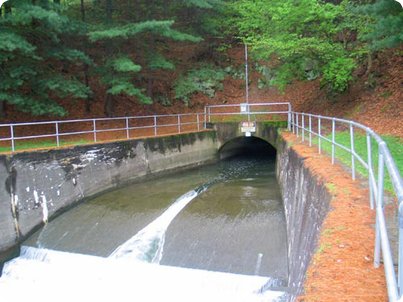
If the rock cover has sufficient weight and enough side resistance to prevent blowouts, only an un reinforced lining is necessary to provide water tightness in seamy rock and smoother surfaces for better hydraulic flow.
Where pressure tunnels are placed through less competent foundations, such as jointed or yielding rock, the tunnel lining must be designed to withstand external hydrostatic and rock loadings in addition to internal hydrostatic pressures. At the extreme upstream end of an outlet works tunnel, where external hydrostatic pressures may nearly balance the internal pressures, the lining must be reinforced to withstand rock loads only. However, if provision is made for unwatering the tunnel by use of intake gates,' bulkheads, or stoplogs, an unbalanced hydrostatic condition will exist. At the downstream portions of the tunnel where outside water pressures diminish, the design of the tunnel lining must consider both external loads from the rock and internal water pressures.
For free flow tunnels in competent rock, a lining may be needed only along the sides and bottom to form a smooth waterway. In less competent material, lining the complete cross section may be necessary to prevent caving. For that portion of a free flow tunnel immediately adjacent to the reservoir or just downstream from a pressure tunnel, the possibility of hydrostatic pressure buildup behind the lining caused by leakage through the walls of the pressure tunnel or by seepage from the reservoir must be considered. Ordinarily, such external water pressure can be reduced by grouting and by providing drain holes through the lining of the free flow tunnel.
A tunnel in which an independent pipe is installed should be lined with concrete, even if the rock is competent enough to stand unsupported. Because such a tunnel houses the pressure pipe and provides access to an upstream gate, the lining is needed to protect the pipe and operating personnel against rockfall. It also minimizes seepage and protects the pipe, lighting installations, and electrical conduits from seepage water. Site-specific conditions, economy of installation, safety of personnel, and maintenance costs should be carefully considered before deciding to leave such a tunnel unlined. For a pressure tunnel, a circular cross-sectional shape is the most efficient, both hydraulically and structurally. For a free flow tunnel, a horseshoe shaped, or flat-bottomed, tunnel provides better hydraulic flow, but is not as efficient as the circular shape for carrying external loads. For small tunnels under only moderate heads, the horseshoe-shaped pressure tunnel and either the horseshoe or the flat bottomed free flow tunnel may be appropriate, depending on the foundation conditions.



